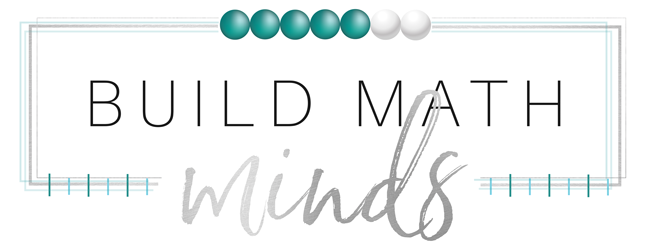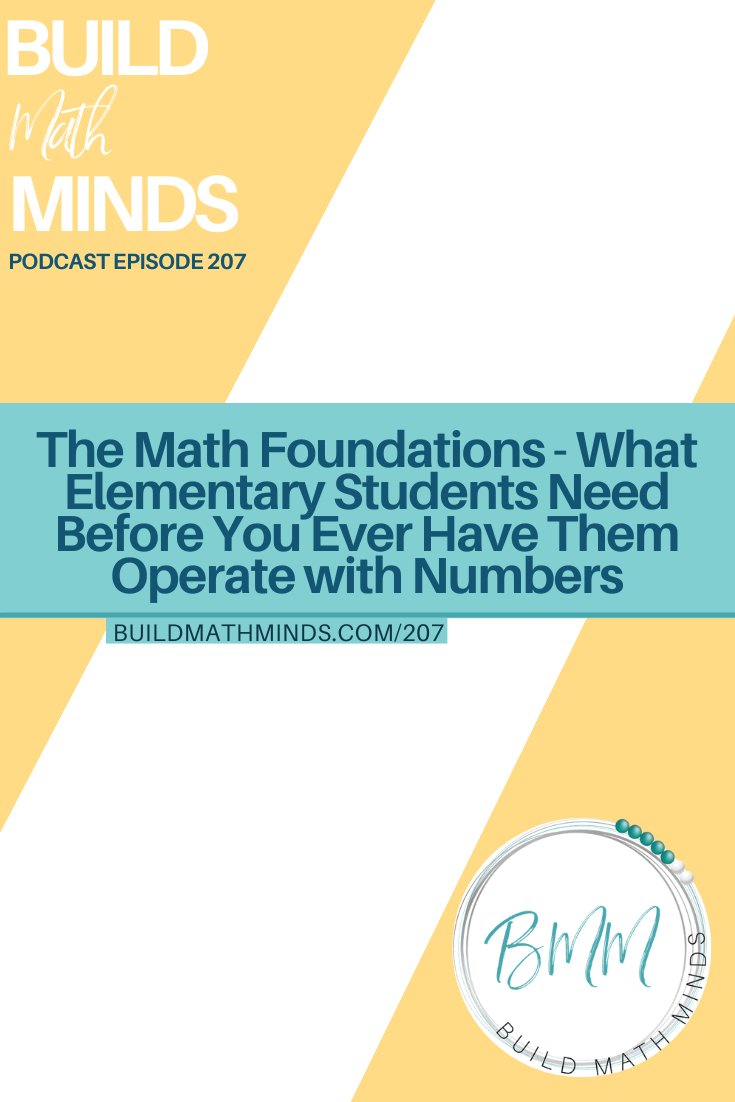Request the Savvy Subitizing Cards (numbers 0-10)
Request the Fraction Subitizing Cards
Learning and Teaching Early Math: The Learning Trajectories Approach by Clements & Sarama
Welcome fellow Recovering Traditionalists to Episode 207: The Math Foundations – What Elementary Students Need Before You Ever Have Them Operate with Numbers
Over the next few episodes I’m going to do a series on building math fluency in elementary students. I’m going to share what I wish I had known when I first started teaching—the foundational concepts that actually build students’ mathematical understanding, not just their ability to follow procedures.
We’re diving into the foundations that come BEFORE operations. Before students can truly add, subtract, multiply, or divide with understanding, they need 8 critical concepts in place. And once you know what those foundations are, you can finally help your students get on track to develop math fluency. If you are an upper grades teacher, this is still for you. When you move to having students operate with fractions and decimals you need to ensure your students have this foundation about fractions & decimals first.
Many students can DO the math, but they don’t UNDERSTAND it. And the problem isn’t that they need more practice. They are missing something much more fundamental. They are missing a sense of what the numbers are all about.
Here’s what’s happening: We’re asking students to operate with numbers—to add, subtract, multiply, divide—before they truly understand what those numbers represent and how quantities work. It’s like asking someone to write sentences before they know what words mean.
Traditional math instruction jumps straight to teaching operations. We show students how to add, how to carry, how to borrow or regroup, the steps to multiply and divide. But we skip the foundational concepts that make operations make sense.
There are 8 number sense concepts that make up this foundation of our students’ math understandings. In this episode, I’m going to share the four early numeracy concepts that every student needs—from PreK all the way through 5th grade—to truly understand numbers before they’re asked to operate with them.
These 4 early numeracy concepts are from the research of Douglas Clements and Julie Sarama. They have different names for a few of these concepts, I rephrased them to make them make more sense to me.
They are: subitizing, verbal counting, object counting, and cardinality. Now, you might be thinking these sound like kindergarten concepts, but stay with me.
Early Numeracy Foundation #1: SUBITIZING
This is the ability to instantly recognize how many items are in a group without counting. Think about when you see five show up on a die—you don’t count them, you just KNOW it’s five. That’s subitizing.
But here’s what most teachers don’t realize: subitizing isn’t just for little kids recognizing small quantities. It develops in sophistication. In PreK and kindergarten, yes, students are learning to recognize 1, 2, or 3 objects without counting. But subitizing should evolve into seeing number relationships within larger quantities. When students look at 8 dots arranged in a pattern, they should be able to see it as “two groups of 4” or “5 and 3 more.”
And in upper elementary? Fraction subitizing becomes critical. When students look at a fraction model, can they instantly see that 3/4 is shown?
Without subitizing, students get stuck in the “count everything by ones” mode which bogs them down and doesn’t allow space for them to see the relationships between quantities. And that makes everything harder—adding, subtracting, multiplying, working with fractions, all of it.
Early Numeracy Foundation #2: VERBAL COUNTING
You might think, “Of course my students can count!” But verbal counting is more than just reciting numbers. It’s understanding the patterns and structure of our counting sequence.
Does their counting at those decade numbers sound funny because they say things like 28, 29, 20-10? Can your students count by tens starting from any number? Like 37, 47, 57, 67? Can they count by 2/3s?
Verbal Counting shows that students understand the patterns in our number system. And when they understand these patterns verbally, it transfers to their ability to compute. A student who struggles to count will struggle with adding, subtracting, multiplying, and dividing because counting is the foundation of all the operations.
Early Numeracy Foundation #3: OBJECT COUNTING
This is where students understand that saying a number name has a purpose; you count things. In early grades, we’re making sure students can touch one object and say just one number. But this develops too.
Can your students count objects that aren’t in a neat line? Can they keep track of what they’ve counted? Can they count fractional parts? Can they organize their counting strategies when problems get complex? This is all part of Object Counting.
Early Numeracy Foundation #4: CARDINALITY
Cardinality is understanding that the last number you say when counting represents the total amount. This sounds simple, but watch what happens when you ask a kindergartner, “How many are there?” after they’ve just counted to 5. Many will count again instead of saying “5.”
But cardinality develops beyond early counting. It’s about understanding that numbers represent quantities, not just positions in a counting sequence. Students with strong cardinality understand that 47 doesn’t just come after 46—it represents forty-seven individual items as a set. They understand that 3/4 doesn’t just mean “three parts” but represents a specific quantity and place on a number line.
When students lack cardinality, they treat numbers as meaningless symbols to manipulate. They might get answers, but they have no sense of whether those answers make sense.
Here’s why I’m doing a podcast about what many may seem as trivial: traditional math instruction often skips right over these foundations. We assume that because students can recite numbers or follow procedures, they have these foundations. But they don’t.
The beautiful thing is, you can work on these foundations at any grade level. Whether you teach PreK or 5th grade, you can incorporate activities that strengthen these concepts. And you’ll see the difference in how your students think about and work and operate with numbers.
So here’s what I want you to do: This week, pay attention to these four foundations with your students. When they’re working on math, pay closer attention for those 4 Early Numeracy concepts. Are certain students counting by ones when they could be subitizing? Are they struggling with counting patterns? Do they treat numbers as symbols to manipulate or as quantities that make sense?
Just notice. Awareness is the first step.
Now, these four foundations are just the beginning. Remember there are 8 total so there are actually four more concepts—the four number relationships—that build on these foundations that actually move them beyond counting, and we’re going to dig into those in the next episode.
For this week, I’d like you to do some activities with your students that will help you see if they are subitizing. Because having those subitizable visuals will help students as you progress into the 4 Number Relationships we are going to talk about next week.
One of the easiest, and fastest, ways to do a subitizing activity is Quick Images. You flash an image for a second or two, then ask the students “How many did you see? How do you know it was that many?”
To help you with that, if you don’t have subitizing cards, I’ve got two sets for you.
One is for PreK-2nd grade and it focuses on subitizing numbers 0-10 (I call them Savvy Subitizing Cards), and one is for 3rd-5th grade that focuses on subitizing with fractions. Once you get the download just print them off on heavy cardstock paper and use them as flashcards with your students.
Even if you teach upper elementary, you may want the Savvy Subitizing cards because they will help you see what foundations your students might be missing. If your students can’t subitize 5, then they won’t be able to subitize 3 groups of 5 when you are trying to help them understand multiplication.
I will link up the places to request both the Savvy Subitizing Cards and the Fraction Subitizing Cards on the show notes buildmathminds.com/207 or if you are watching this on YouTube, both links will be in the description of the video.
Thanks for joining me for episode one in this series! In our next episode, we’re going to dive into those four number relationships I mentioned—these are the relationships that help move your students from counters to mathematical thinkers.
Until next week, my fellow Recovering Traditionalists, keep letting your students explore math, keep questioning, and most importantly, keep Building Math Minds.




